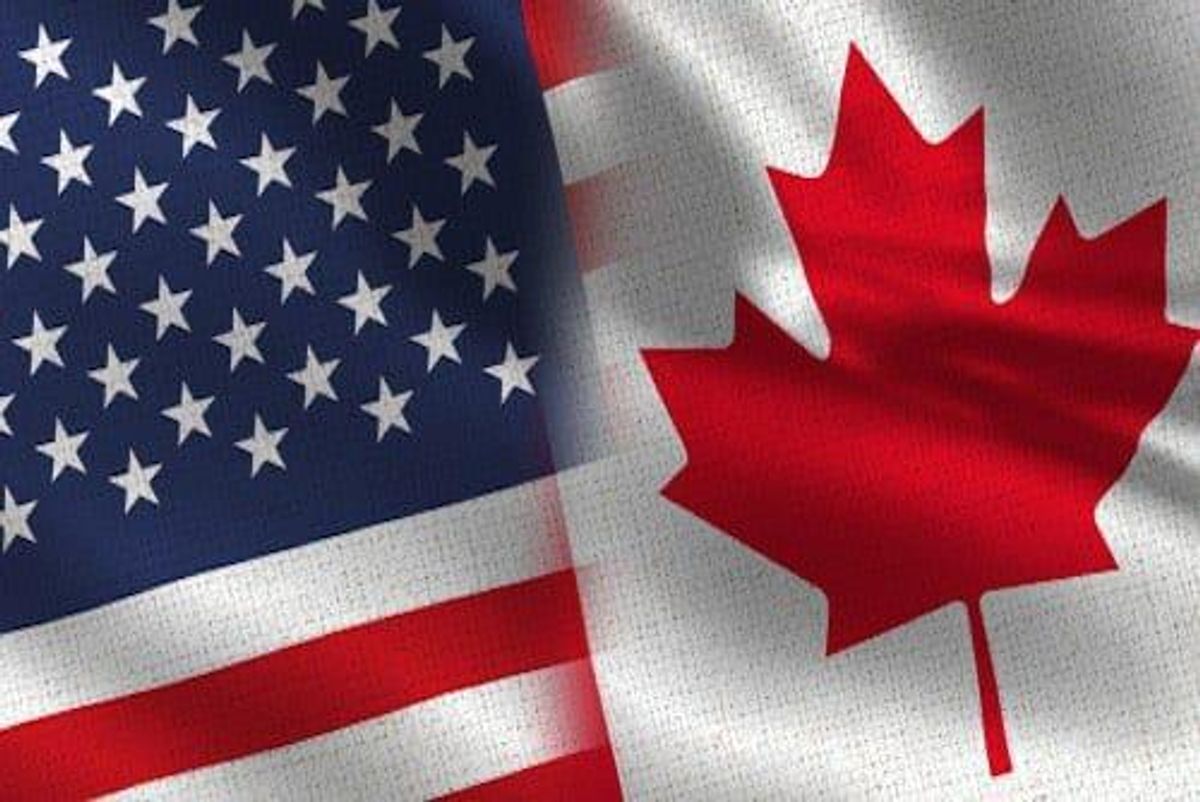
At Toronto’s MoneyShow, John Zamparo and Steve Hawkins discussed projected markers of growth for cannabis and challenges for the US and Canadian markets.
At a recent investment conference in Toronto, the next phase of growth for the nascent cannabis industry — and the key players within it — was the talk of the event.
During a discussion at the MoneyShow conference in Toronto, equity research analyst at CIBC Capital Markets John Zamparo and Horizons ETFs Management (Canada) CEO Steve Hawkins discussed projected markers of growth for US and Canadian cannabis equities.
The expert duo also talked about the challenges for the US and Canadian markets, as the players in these sectors continue their maturation process.
When it comes down to the two countries, Zamparo said that, internationally, the US will leverage its branding know-how, while Canadian companies will ship out proficiency at the operational level.
“(Canada) will probably export … its compliance with regulatory systems, its capital markets expertise, its expertise and growing genetics, its strategic support,” he said.
Looking to identify the drivers of the Canadian market, Zamparo said the upcoming legalization of edible cannabis products is key, noting that it could almost double the value of the industry in the country.
The analyst also said the growing retail space will be a crucial piece of the marijuana market in Canada moving forward.
“You cannot read a transcript from one of these licensed producers without them mentioning retail stores. It’s typically why they don’t reach consensus estimates,” said Zamparo, adding that retail will be driven by consumers who elect to shop at brick-and-mortar locations, getting guidance from budtenders, over an online experience.
In the US, Zamparo explained, the drivers are more on the political side. There has already been movement at the state level to bring cannabis to legal status, and, in the 2020 federal election, marijuana legalization could be a critical topic of discussion, he said.
Hawkins said he favors the US in terms of investing opportunities, an idea that has dominated investment trends of 2019.
The exchange-traded fund (ETF) executive criticized the way regulations have stunted the growth of the marijuana industry in Canada.
“(US cannabis companies) … have this vertical integration, controlling their distribution, their extraction, packaging and then the sale of the individual product all themselves,” said Hawkins. “Here in Canada, we have screwed up regulations.”
Horizons ETFs is the creator of the world’s first marijuana ETF, the Horizons Marijuana Life Sciences Index ETF (TSX:HMMJ). The firm manages a collection of marijuana ETFs, a trend that has continued as more operators launch a variety of funds in the US and Canada.
Hawkins went onto mention Canada’s regulations, which force producers to adhere to strict packaging limits, as another barrier to growth. The rules limit THC to 10 milligrams per package and packaging can only be one uniform color without any branding.
In the US, cannabis still isn’t federally legal; it is largely a state-by-state decision for programs and sales.
This fractured state of business forces cannabis firms in the US to essentially copy and paste their operations into each state by way of asset creation or acquisition.
Interestingly enough, Hawkins said, these multi-state operators (MSOs) are the biggest lobbyists against federal legalization.
In his view, these companies, having spent substantial capital to build out their operations, would not be pleased to see a wide open market allowing commerce between states. “They don’t want federal legalization, which will allow somebody from California (or) Colorado, who’s growing (cannabis) significantly cheaper, to just be able to ship it across the state lines,” he said during the panel.
Hawkins noted that one of the largest barriers to continued expansion of marijuana in the US is banking issues. As it stands, cannabis companies can’t access services from banks, which is where the SAFE Banking Act comes in.
The act is set to be put to a vote in the US House of Representatives this week.
Zamparo divided the cannabis companies in Canada into two groups: ones that are creating supply and distribution channels and brands, and others that are already profitable. “There’s only a handful that have reached profitability,” he said. He added, however, that companies “don’t necessarily need to be profitable right now,” especially if growth is the main concern.
It’s a different story in the US, where firms are already bringing in profits. When asked about the opportunities in marijuana in the US relative to Canada, Hawkins said while Canada is expected to see immense growth, with what Deloitte estimates will be a C$2.7 billion edibles industry, the US already has a handle on cannabis-infused foods and beverages.
“(The US) knows where the growth is, they know what products are actually selling in the marketplace. Canada, we still really have no idea what’s going to happen from a sales perspective, or we’re looking to the US for guidance,” the executive said.
Don’t forget to look for the rest of our coverage of The MoneyShow Toronto, with more insights from the show. You can also follow us @INN_Cannabis for real-time news updates!
Securities Disclosure: I, Danielle Edwards, hold no direct investment interest in any company mentioned in this article.





